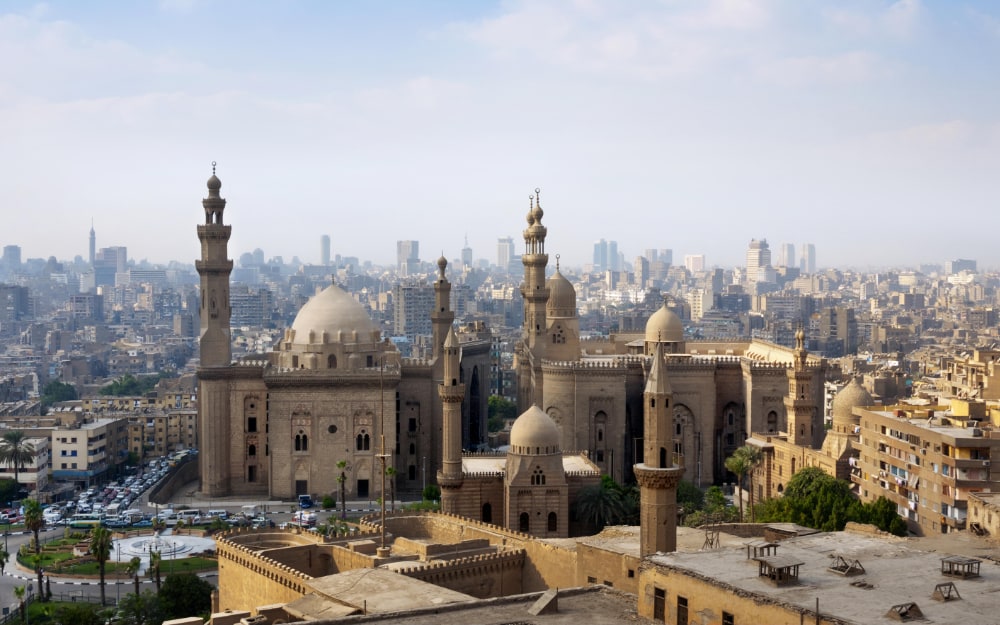Population in Urban Area, now
- World: 7th
- Africa: 1st
- Egypt: 1st
Population in City Area, 2022-04-18
- World: 17th
- Africa: 2nd
- Egypt: 1st
Cairo Urban Area Population Graph
Cairo Population Review
The renowned and ancient city of Cairo sits along the banks of the Nile River in Egypt. The city was founded in 2,000 B.C. when King Menes ruled it. One of the oldest structures in Cairo is the Babylon fortress, built by the Romans in the 1st century. Cairo has always been a powerful and populous city, and that has continued into the 21st century. The city is now home to 7.7 million people and almost 21 million people live in the Greater Cairo area.
Spread out over 3,085 kilometres, Egypt’s capital city is by far the largest and most populated city in the country. The megacity has 19,376 people per square kilometer, which makes it the 37th most densely populated city in the world. If that seems like tight quarters, it will be nothing compared to when the Greater Cairo area’s population is predicted to reach over 28 million people by 2035.
A multi-cultural past, but a homogenous population
While many ethnic groups have inhabited or influenced the city in centuries past, Cairo is now a surprisingly homogenous population with very little in the way of ethnic minorities. Those that do exist in the city are small, sparsely populated, and not centered in any specific communities. Egyptians are the primary ethnic group of the city and Arabic is the most widely spoken language in the city. The most foreigners living in Cairo hail from the United States and the United Kingdom. 89% of the population of Cairo identify as Sunni Muslim. Once upon a time, the city had a large population of Jews, but most of them have left for Israel or the United States.
A progressive growth rate
Cairo has grown rapidly over the last few decades. Since 1950, the population has grown from just over 2.4 million people to the current 20.4 million people who live there today. This is a growth of over 700%. Cairo can attribute much of its growth to the huge gap between the birth rate and the death rate. On average, there are 30 births to every 1,000 people in the city, while only 7 deaths to every 1,000 people.
A megacity with troubling issues
Like many megacities, Cairo is expanding beyond the capabilities of its services and infrastructure. The city is an example of a third-world megacity that is suffering from a rapidly growing population and insufficient services leading to extensive poverty. It’s estimated that—out of the 27% of the Egyptian population that live in poverty—Cairo’s population alone makes up 18%. However, the data on people living in poverty in Greater Cairo is considered to be severely underestimated. This is because poverty lines are set too low when compared to the basic needs of those living in the city and because census surveys (which is what the poverty count is based on), undercount the people living in slums and informal settlements—of which there are about 300 in Cairo.
This poverty also plays into the city’s overall health and wellness. Cairo struggles with many health issues, including malnutrition, bacterial infections, and severe air pollution. Cairo has someone of the highest air pollution levels in the world and it’s believed to be responsible for almost 2% of all annual deaths. Those living in Cairo also struggle to have consistent access to a clean water source. 40% of Cairo’s inhabitants do not get water for more than three hours a day, this leads to people using water from the canals, which is not sanitized and carries the risk of infectious disease. It’s estimated that 17,000 children die every year in Cairo due to diarrheal disease.
